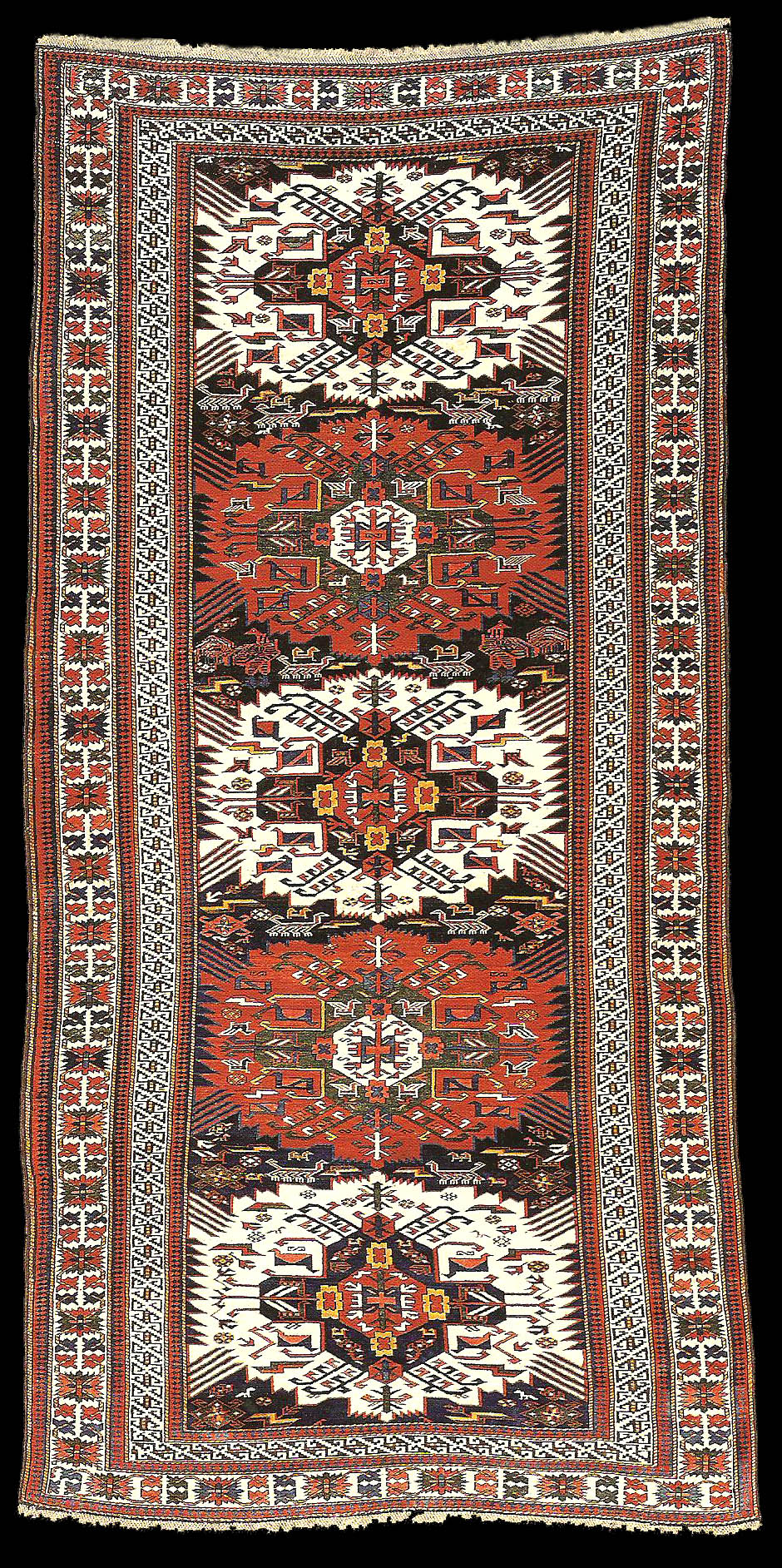|
Daghestan 388 X 187
cm Last quarter of 19th century
The midnight-blue central field shows five large sunburst medallions,
alternating on a white and red ground. There is a remarkable high number of
animal figures in the medallions and in between. The main border on a light
ground consists of the familiar vine meander with large palmettes (so-called
crab border). Another dominating S border competes with the main border.
Three reciprocal crenellated stripes complement the border system.
The characteristic difference between the Alikhanly from the Kuba region and
those from Daghestan is the weft: the latter has one weft only, while Kuba
carpets always have at least two wefts.
Warp: Wool, Z 3 S, brown.
Weft: Wool, Z2, one weft waved and staggered every other row.
Pile: Wool, Z2; Pile Height: 6 mm.
Knots: Symmetrical 1, H 40xV30 =1,200 Kn/dm2.
Handle: Velours, not thick, smooth.
Upper End: c. 0.5 cm wool flat-woven end; 2 double soumak rows; 2 x
midnight-blue countered soumak; groups of warps knotted together in four
staggered rows.
Lower End: Like upper end without soumak, 5 staggered rows of knots instead.
Selvedge: c. 0.5 cm blackish-brown woolen shirazi around 2 ribs in
figure-of-eight wrapping with supplemental threads.
Literature: V. Schurmann, loc. cit, p. 293, ill. 112, classified as Zejwa.
published at
Siyawouch Azadi "Azerbaijani Caucasian rugs", plate no: 29
 |

